February 1 - 7, 2015: Issue 200
Published originally: June 15 - 21, 2014: Issue 167
Australia Day Awards Announcements Feature
Beryl Driver OAM
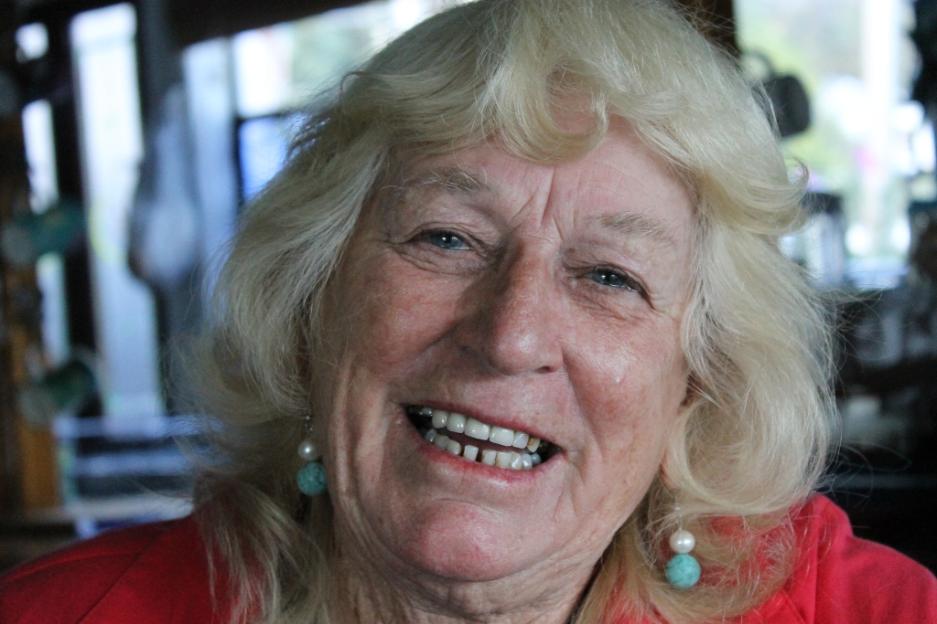
Beryl Driver OAM
Update 26.1.2015: Congratulations Beryl Driver - OAM - Australia Day Honours List 2015, 'For service to the community through charitable initiatives'
Today Beryl Driver is arriving back from one of the world’s biggest country music festivals, the Nashville June 5th to 8th 2014 CMA Festival, fulfilling a lifelong dream of hers to attend this annual feast of rural melodies. Fulfilling the dreams of others is what this lady does every other day, with a focus on children, lots of children! Many people know of Beryl’s many escapades while part of the Variety NSW, the Children’s Charity, Car Bash events, where all whom the Bashers meet along the way seem to be the real winners. This year as Beryl turns a fit and fabulous 81 years young and it will be her 16th Variety Bash, 17th if you count the one she did in New Zealand.
An Australia Day Award in 2013 from Pittwater Council in the senior category recognised her tireless fundraising for the children’s charity Variety, but Beryl does a fair amount more than that each year, and caring about others stretches back further than the 17 years some Mermaids from Palm Beach have taken themselves over 6000 miles each year on dusty desert roads where the journey actually is the destination, every single day.
This week we get to share a small insight into a Pittwater icon, a plain spoken lady who definitely knows what is worth more than money.
When and where were you born?
%20at%20Kooba%20station%20with%20sister%20Frieda%20circa%201936-37.jpg?timestamp=1402456318859) I was born in Leeton in 1933, May 17th. My parents worked on the F W Hughes property called ‘Koober Station’ at Darlington Point. My grandfather and grandmother were there too – working. So I was born there and we were there until I was two. We then moved to Mona Vale, to the glasshouses, in 1935.
I was born in Leeton in 1933, May 17th. My parents worked on the F W Hughes property called ‘Koober Station’ at Darlington Point. My grandfather and grandmother were there too – working. So I was born there and we were there until I was two. We then moved to Mona Vale, to the glasshouses, in 1935.
Right: Beryl with sister Frieda
I grew up around Mona Vale. My father had a trucking business and when I was about five and a half he got a job building the roads into Glen Davis to open up the shale mining place there.
GLEN DAVIS ROADS. LITHGOW. Sunday
The Acting Minister for Supply and Development, Mr. Holt, has informed Mr. Thomas Schroder, secretary of the Western Miners' Federation, that Mr. Schroder's proposal that a road should be built from Glen Davis, the site of the new shale oil works, to Newnes Junction, via Wolgan Valley, is not acceptable.
The Minister says I hat the New South Wales Government's plan to improve the road between Glen Davis and Capertee, on the main road between Lithgow and Mudgee, Is the most economic course. A road via Wolgan Valley would be at least 13 miles longer, and would involve driving a track through 10miles of virgin country, or making a tunnel five miles long.
Commenting on the Minister's view, Mr. Schroder said that the road he suggested had better grades and would cost much less to build because much of the disused railway line from Wolgan Valley to Newnes Junction could be used. GLEN DAVIS ROADS. (1939, November 27). The Sydney Morning Herald (NSW : 1842 - 1954), p. 5. Retrieved from http://nla.gov.au/nla.news-article17635441
PETROL FROM SHALE. GLEN DAVIS PLANT OPENED. AN INDUSTRIAL MILESTONE
Sydney, Aug. 27.— The first petrol produced en a commercial scale in Australia from Australian crude oil was distilled at Glen Davis yesterday and used in a motor car which carried the Minister for Supply- (Sir Frederick Stewart) 150miles to Sydney.
%20family%20picnic%20at%20Glen%20Davis%201939.jpg?timestamp=1402459586964)
Kaune Family picnic - on the road to Glen Davis - circa 1939
Sir Frederick turned the tap for the first petrol to flow into the first of several tanks which have been built to hold the 10,000,000 gallons which will be produced during the first year's operations. Within a few days the full battery of 108 retorts will be absorbing nearly 500 tons of shale a day and producing 58,000 gallons of crude oil, which will be converted into about 35,000. gallons of petrol. In a national broadcast, Sir Frederick Stewart said the occasion was a milestone in Australia's industrial history. 'The great importance of locally produced oil in peacetime is magnified in wartime, he said. 'Oil is a vital requirement for victory and Glen Davis adds greatly to our security. Faced with the rationing of petrol supplies and with uncertainty about the future, this petrol pouring from the plant is a very welcome sight.' The shale deposits at Glen Davis are claimed to be among the richest in the world, yielding more than 100 gallons of oil to the ton, compared with 25 gallons a ton from shale being worked in Scotland. Road tests, carried out by the N.R.M.A., with small quantities of laboratory produced petrol from Glen Davis have shown that it is equal to any imported petrol. It will probably be marketed through the major oil companies.PETROL FROM SHALE. (1940, August 28). Kalgoorlie Miner(WA : 1895 - 1950), p. 4. Retrieved from http://nla.gov.au/nla.news-article95081597
%20aged%2014%20years%20at%20Bondi%20dads%20truck%20in%20background.jpg?timestamp=1402457560562) My mother and I went. There was about 300 men on the roads and he (dad) worked and we lived in a caravan. She (mum) did the cooking for all of those people and we moved as the road was done- moving a bit further in then a bit further into the valley.
My mother and I went. There was about 300 men on the roads and he (dad) worked and we lived in a caravan. She (mum) did the cooking for all of those people and we moved as the road was done- moving a bit further in then a bit further into the valley.
We were there until I was nearly eight and a half. I never had any schooling – nothing. Just went with my mother everyday and shot rabbits – she would cook rabbits for the 300 men; and tinned peaches, rice. My father said he never wanted to see any of that ever again.
We used to come home every second weekend to Mona Vale because my sister was staying with my grandparents and going to school, she was four years older than me. I went to school in Mona Vale for one day and came home just after lunch and said I never want to go to school again.
%201940%207%20years%20old.jpg?timestamp=1402457456024)
We then moved to Bondi and I had my schooling in Bondi. I went to Bondi Public School, I was nearly nine by then.
Left: Beryl - aged 7 Right: Beryl aged 14, at Bondi - one of her dad's tucks in background.
Then I went to Dover Heights High School and left at the age of 14 to look after my mother, who had a broken spine. I never went back to school and so didn’t have much education.
We came to Mona Vale all the time – I spent all my holidays there, weekends there – all my friends were around Mona Vale, and after I got married we came back to Mona Vale, to Warriewood where the glasshouses were.
So you have seen Warriewood and Mona Vale change then?
Absolutely. If I go back into my memory there were not many houses – it was just all farms, glasshouses, masses of Yugoslav people came out and started farming the glasshouses. It was a thriving community.
There wasn’t much in Mona Vale, probably only half a dozen shops and that’s where you had to go.
But there was nothing like what Warriewood is now. Warriewood road was just a dirt track, there was a funny old hill.
So you left school to look after your mum; how long were you doing that?
She had a spinal operation, which was the first one ever done in Australia; where they took the bone from the hip and put it in the spine and put big steel plates in.
I looked after her for about 12 months. She could then walk again.
She lived until I was 27, by that time I was married with three children and back living in Warriewood.
%20family%20037.jpg?timestamp=1402457166634)
Above: Beryls mum on the beach. Below: Beryl's mum and dad on end - on Mona Vale Beach.
%20mum%20and%20dad%20on%20end%20at%20Mona%20Vale%20beach.jpg?timestamp=1402457312817)
When my mother got well I was about 16. I went to work for a legal firm. I started off as a registration clerk and ended up as a secretary because I took a business course at college and ended up as a secretary to one of the solicitors. I left when I was eight months pregnant with my first child. That was all the work I’d ever done until Stace had just started school; she would have been about five.
Where did you meet your husband?
At school, when we were about 12 years old. He went off to Korea when he was 18, he then came back and we got married when I was 19. He was 21.
%20family%20092.jpg?timestamp=1402458181118)
Husband Brian McLennan Driver in Korea with his squad: 26 January 1952 to 28 January 1953: 3rd Battalion, The Royal Australian Regiment
That’s pretty young. You had to get your parents permission then, you were under 21?
Yes. Oh gosh yes.
Why did they let you go?
I don’t know, I was so determined I suppose; all I wanted to do was get married and have a family. I went back to work when all three of them were in school – and by that time I had acquired two more girls, a five and six year old.
You’re well known for having housed and mothered more than your own children Beryl – how did that happen?
He was a friend of mine since I’d been a little girl. They lived in Warriewood. He was married with two children and in the Fire Brigade with my husband. They were great friends, I’d known him all my life so we were all great friends.
The children went to school one day and when they came home the wife was gone, their mother was gone. We never knew, for 16 years, where she was. He was a very quiet sort of person, very introverted and didn’t really know how to look after the girls, and his mother didn’t want them. He asked me to mind them for three weeks for the school holidays – and he gave up his job and went too.
So I was left with two girls for seven years – five and six years of age – my own daughter was five years old then. My boys were nine and ten. So it was pretty hard, I had them all.
%20family%20008.jpg?timestamp=1402461041603)
Beryl's children - Michael, Stacey and Bruce.
Then I went back to work; I got offered a job running a little Dry Cleaning agency in Mona Vale- you know where Berkulouw Books are now? Well, there was a tiny space there that was meant to be the staircase of the building that they closed in and made a tiny Dr Cleaning agency there and put an old wooden staircase up the side of the building.
I was there for 26 years; a long time. It was Grey’s Dry Cleaners and I worked for him – he would pay me wages which wasn’t much. I remember when my husband left I had five children and I was getting $45.00 a week.
How did you do it?
I went to work at three other jobs. I worked at Newport Hotel, I worked as a cleaner after work in the Estate Agents, and then during the day of a weekend I worked cleaning units for the Estate Agent – those they were wanting to rent out. I did that for 18 months – just so I could keep my house.
So that was alright – we never saw my husband again for about 16 years. Then the fellow came back to his children after seven years, took them back, and rented a little unit near my shop in Mona Vale.
What did he say about where he’d been?
Nothing. I still talk to him and in all those years he has never said a thing. Never gave me any money – never said anything – nothing. The girls would still come to me after school – one of them is now just like my own daughter. The other remarried about ten years ago in is living in Bribie Island – I never hear from her. The younger one lives in Narrabeen and I hear from her just about everyday, I see a lot of her and her children.
The Boatshed – how did you end up at Gonsalves Boatshed?
My youngest son did an apprenticeship in Stainless Steel work and came to work at the boatshed for a Stainless Steel fellow, John Oliver. He had the Stainless Steel business in the front of the boatshed. He started there when he was 19. he was just starting to look at leaving home. This building was two flats; next door was vacant and Carl and Caressa owned the boatshed. We all knew each other. They lived here, on this side, and worked the boatshed. They were only young then.
They told Bruce he could have the flat. I furnished it all and we would all come down, particularly on weekends. Bruce would be away because he didn’t want to be stuck where he worked.
In the end he used to end up coming home for dinner and Stacey and I would come and spend the weekend down here and he’d spend the weekend at home. Fiddling with his car. He then said ‘I’m coming back home’. I asked ‘why’ and he said; because I finish work, sit down and have beer with the boys, go inside and go to bed. I don’t really want to do it that way – I’m coming back’. He was 20 by then.
My eldest son, he was at home, then said ‘I’ll go down there’ – so he came down but he had started his own motor mechanic business in the backyard at my house at Bilgola Plateau – so he was home for breakfast, lunch and dinner and just coming down to sleep here. He would be half the night at Bilgola. Every weekend he’d be working on cars so Stacey and I would be down here.
He got a girlfriend and they got very serious and it looked like they were going to live together and I thought, if she moves in there, I’ll never get back here, so I said to Carl and Caressa, I’m coming down permanently and they can have my house. By this time Stacey had a boyfriend, Bruce had a girlfriend, they were spending all their time at Bilgola – so I moved permanently down here, and that was 40 years ago. As soon as Carl and Caressa bought the big house up on the hillside here – they moved in the January and I was 50 in the May, I moved into this side of the house.
Would you believe that 80th birthday has come and gone – all I did was have parties for a year! So I’ve been 31 years in this side of the house.
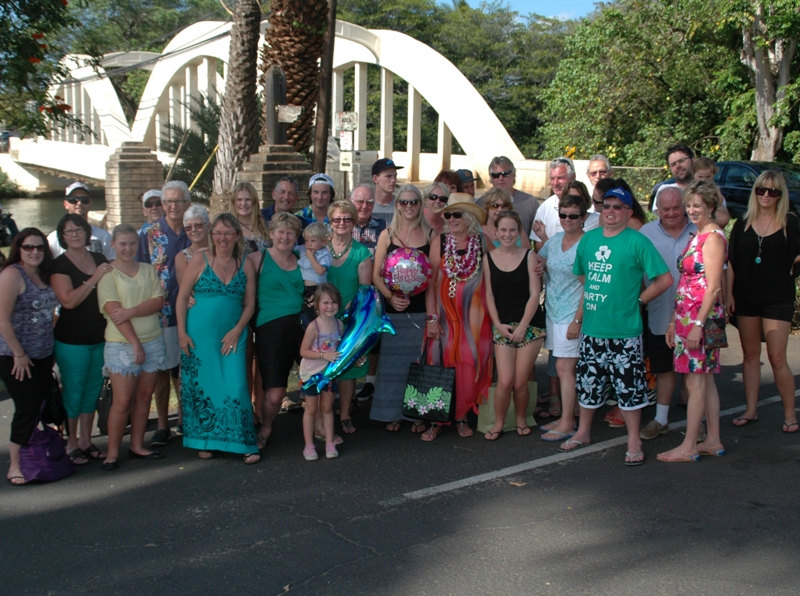
Beryl's 80th - in Hawaii!
What was Carl Senior like?
Just about the most wonderful person I’ve ever met. We had some wonderful parties here – Melbourne Cup days, ANZAC Days. Melbourne Cup day we always had a party out the front; I always did all the food and made my famous sausage rolls. They’d take my television out and everyone would watch the Melbourne Cup.
In those days the Water Police were terribly friendly, they were a great bunch of guys. They would arrive after the Melbourne Cup race had run and play Two Up in the yard where the car park is now. We used to have big Christmas parties – it was a wonderful time; we had lots and lots of fun. There was always something going on.
%20family%20018.jpg?timestamp=1402461716034)
Beryl (front right) with Warren Mitchell (Alf Garnett; 'Till Death Us Do Part') and friends - circa 1975 - Pittwater.
There was always dramas too – the weather was different.
We used to get huge storms, really wild. One I remember, which would have been in the 1980’s – I was in bed, one early morning, it would have been about 5.30 – and I never locked doors, there were never any locks on the doors, and the electrician that lives across the bay came tearing in saying ‘are you alright?!’ – at this time I’d just about fallen out of bed as there was a terrible ‘THUMP’ in the house, my house was moving – I said ‘I think so – but what happened?’
He said ‘just look out your window’; there had been this dreadful storm and this huge 38 foot powerboat had broken its moorings and come through about fifteen boats and not hit one of them and was coming straight on, apparently there was people a couple of doors up screaming out to me who couldn’t get to me because of the storm, and of course I never heard them, and they could see this boat was coming straight for me.
It would have killed me if it had continued straight on as in those days I slept at the front there – but when it was near me it went side on, smashed the verandah down and was hanging off the verandah, this 38foot cruiser.
It was the funniest day really, when I look back. I rang my youngest son Bruce and said ‘come quickly’ – he always says I exaggerate things – he said ‘oh, it couldn’t be that bad’ – but by the time he got down from the Plateau there was another dozen people here, Carl was here – Bruce couldn’t believe it.
They were trying to get the cruiser pulled away off the verandah. The surge was so bad the work boat wouldn’t budge it. They ended up having the great big Police boat and the ferry to pull it off. Bruce was standing on the front of it, Carl had the workboat going, the ferry top one side, the big Police boat to the other; they all had ropes on it and got it just past the pontoon out the front there and the rope broke, and the wind came and took it. My son is still sitting on it and went flying down towards Observation Point, and there’s a big rock down there and hit the rock.
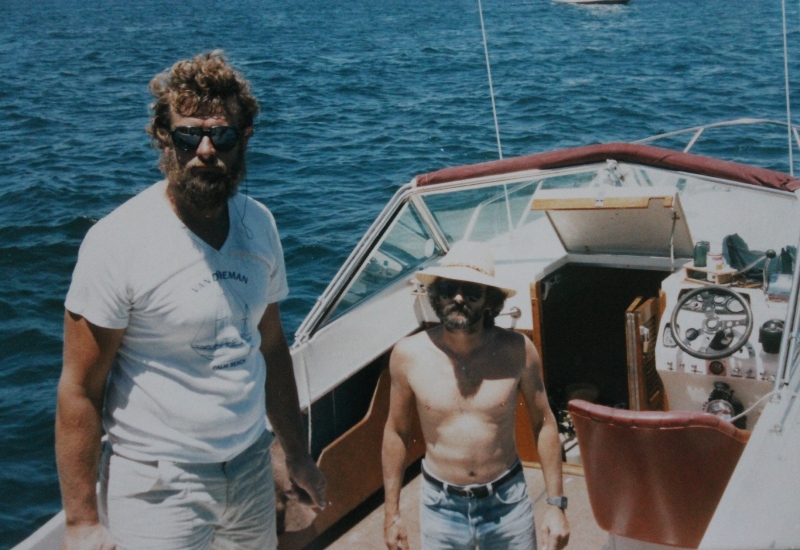
Carl Gonsalves (Snr.) on his workboat.
By that time Carl is there in the workboat saying ‘Jump! Quick, jump!’ and screaming at him. So he jumped into the workboat and just as he did the thing took off again – we thought ‘it will go out to sea’ – no one could go after it, the Police boat would never have got it – it was wild, the wind was 175 miles an hour – a huge yacht Vic Walton’s yacht, ended up smashed to pieces on that side of the beach (Snapperman’s) – there was boats everywhere. The cruiser went down the bay and ended up on the beach in front of the golf course.
That afternoon after we’d had all this drama, which just went on and one and on that day, they decided to go back down and get it because it was high tide- they could float it off. They started towing it back and got just back out the front here, there was probably about 20 of us watching them, but it had a big hole in it and had sprung a leak. My son was on it again!; and had been saved again once during the day on a yacht, and we heard Ollie scream out ‘Jump Bruce, jump!’ and Bruce jumped and as Bruce jumped, and I have pictures of this, the boat just went up and sank straight down within two minutes – I’ve never seen anything go down so fast in all my life.
It sat out there for a long time, they tried to shift it, they had Navy divers trying to get it; eventually they had to cut it up before they could move it.
That was one experience we had here but we seemed to have that kind of thing all the time during that period. Always something going on; it’s been very quiet the last few years.
Variety NSW and the Children's Charity, your involvement in the annual Car Bashers Rally – how did that begin?
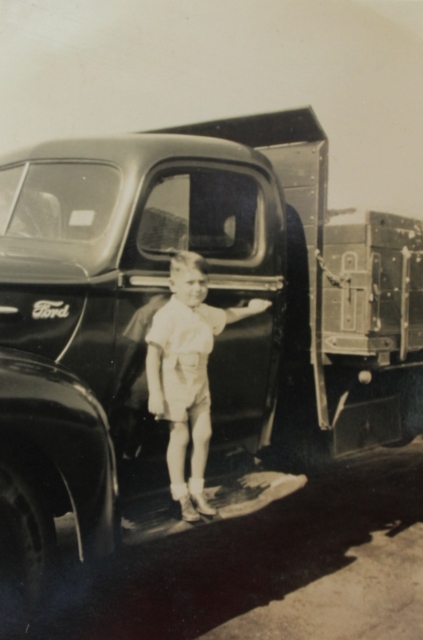 The Redex Trial was big time in my day. My father was very friendly with Jack Murray; I was only a little girl when we used to go around to his workshop. I’ve always been into cars and trucks as my father had a trucking business – I was a tomboy, my sister never ever learnt to drive. My father wouldn’t let me drive until I could drive the truck and the semitrailer – then I was allowed to use the car. So I could drive a tuck and a semitrailer before that.
The Redex Trial was big time in my day. My father was very friendly with Jack Murray; I was only a little girl when we used to go around to his workshop. I’ve always been into cars and trucks as my father had a trucking business – I was a tomboy, my sister never ever learnt to drive. My father wouldn’t let me drive until I could drive the truck and the semitrailer – then I was allowed to use the car. So I could drive a tuck and a semitrailer before that.
Right: one of Mr. Kaune's trucks.
I’d always wanted to do the Redex Trial but I got married and had children and that all finished. Then in later years, when Variety began going and the Bash started, and it’s the 30th Anniversary this year, I asked my son to come with me. When we found out it was eight and a half thousand to enter that was just astronomical money for us I said ‘well that’s out – I can never go on a Bash now.’
It’s a lot of money even now.
Yes, it is. Years later I was friends with Kit Moore and was up at her place one night when her youngest son Tim came to visit. Lovely young man. He had just come back from doing the Bash, he had done five Bashes. There was 10 of them that went on a big Fire Engine, they called themselves ‘the Ten Bucks’; they were young guys, none of them were married, they’re all married and have children now, and they’d gone for five years running on this Fire Engine. Tim started talking about it all and said it was the most wonderful thing, nobody cares what you do for a living, they don’t even ask for your second name, nobody’s interested in that; we’re all there for the one thing’ to raise money for the children and of course, seeing the children along the route in the schools is a big part of it.
I told him I’d always wanted to do that but that it was a bit late now. He said ‘it’s never too late – just go!’ – I was 65 by then – ‘just go and get yourself a car and go and take my mother with you.’
Kit was a lot younger than me – she said ‘I’ll go!’. I said, ‘we’ll ask Michael’. So the next day I asked Michael if he’d get me a Bash car – in 1999 it had to be pre 1967 and now it’s pre 1974. Michael said yes, he’d help me get a Bash car.
Before the end of the week he rang me up and said ‘it must be your year to do the Bash mum because I’ve found you a Bash car’. He found an EH Holden but it was advertised to close on 30 thousand dollars as the chap had spent a fortune restoring it – it was beautiful – he had done the Flying Doctor Bash – he’s a publisher down in Warriewood, David Scott. It’s a small world – he’s forever asking me to write a book – he says – ‘just put it all down and give it to me to think about and I’ll put it all together.’
We went down to see him and see the car; at this stage I was minding my grandchildren, I used to have them everyday all day, had them for years. We looked at the car and it was beautiful but he wanted all this money for it, he was just lovely. I said, I can’t have it because I haven’t got any money. He said, you must have some money if you want to do this; I said, I’ve got exactly three thousand dollars in the bank and I have no other money and I’m on an old age pension and that’s it. I thought I could buy an old car and could do fundraising and get the amount to put into Variety and then manage to go.
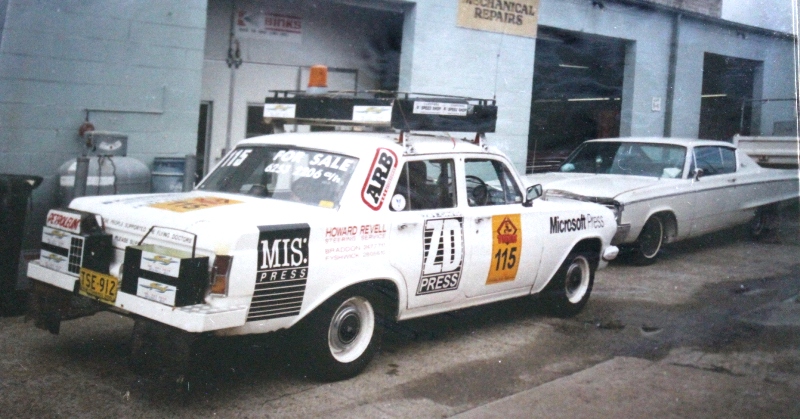
I explained I would be the first woman to take an all woman crew and that I’m 65 and would really like to do it. He said, hmm… well I’d really like some money for the car that I’ve put so much money into. He said, ring me tomorrow, let me think about it.
So I rang him, got his secretary, and she said, ‘David’s sitting here with one thumb up and one thumb down’ – I said ‘what does that mean?’ – she replied ‘you can have the car for three thousand dollars and he’s losing a fortune.’
Well, I was round there so fast, I just couldn’t get to Warriewood quick enough. I took the three littlies on a bus and raced down, got the money out the bank, walked in, gave him the money, burst into tears and took the car.
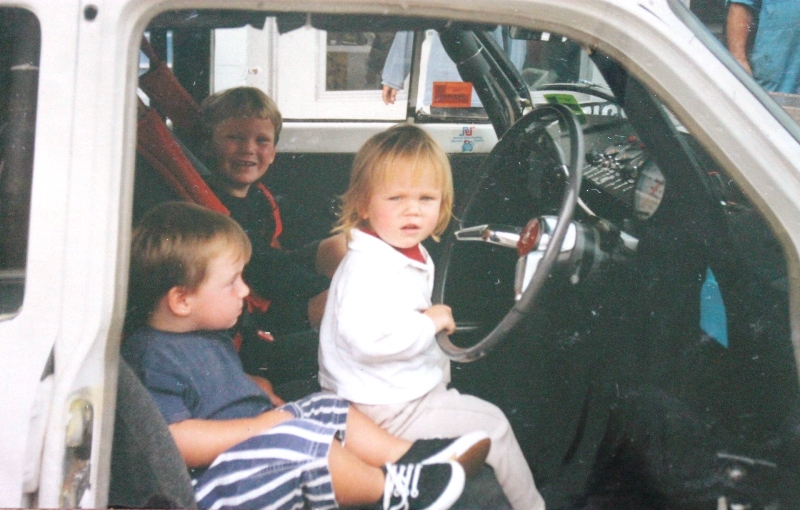
Then we worked on it and worked on it. Kit and I did - for three years.
A friend of mine then painted the car, an artist, Jim Thompson – wonderful fellow; he painted Van Diemen, the ferry, this was the Bounty coming in – all on the car.
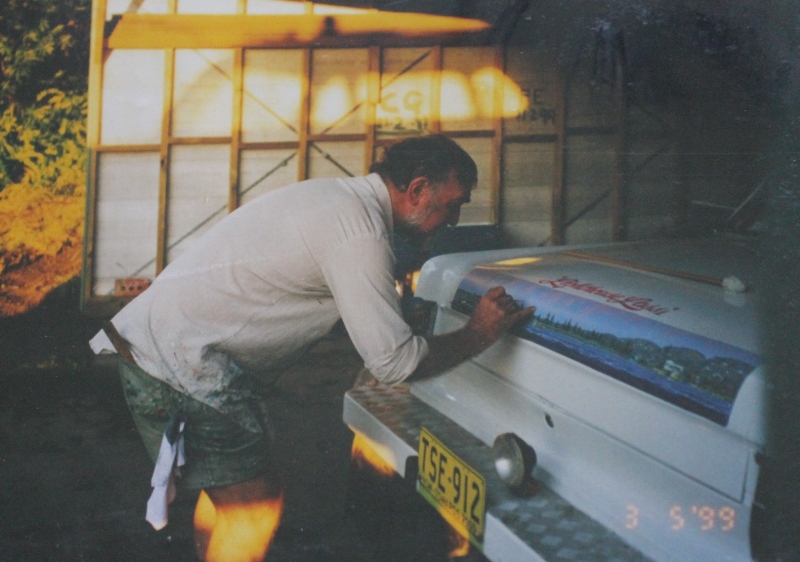
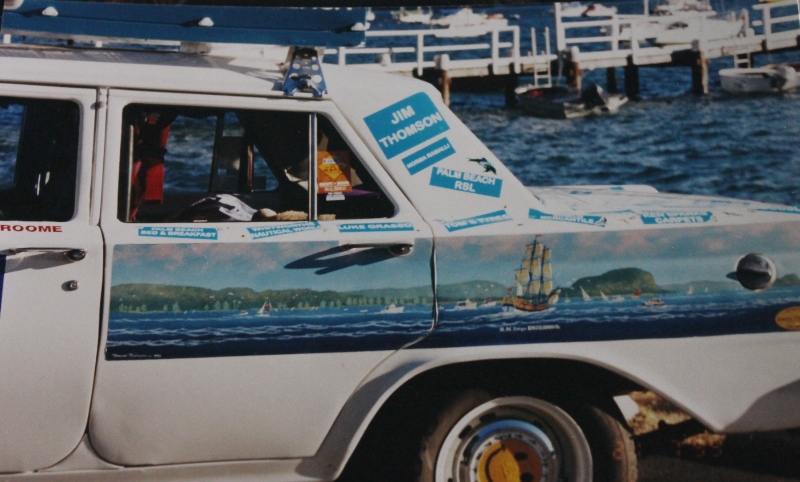
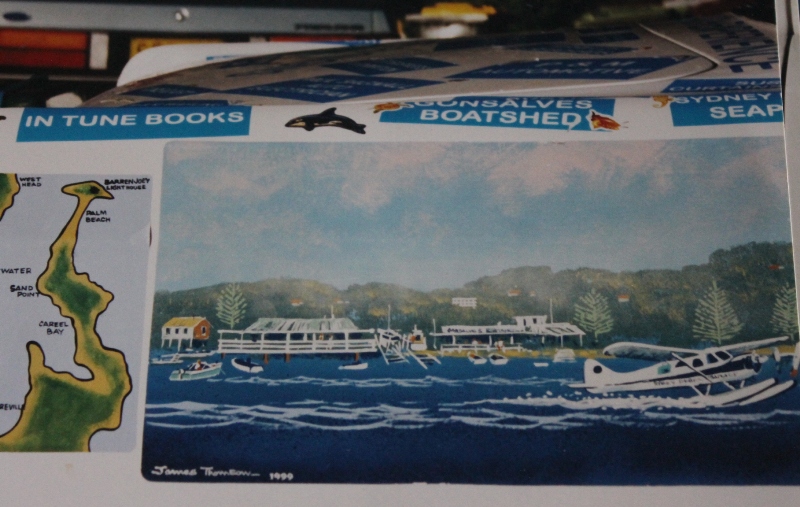
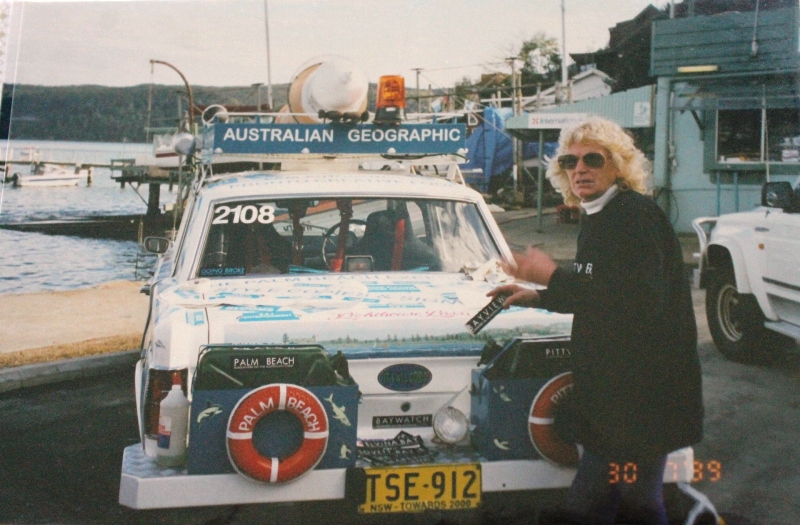
Palm Beach kindergarten painted the bonnet – this is Stacey’s youngest – one little boy did a big black spit, we asked ‘what’s this big black spot? – he said ‘that’s the sun at night, don’t you know?’ – isn’t it gorgeous…
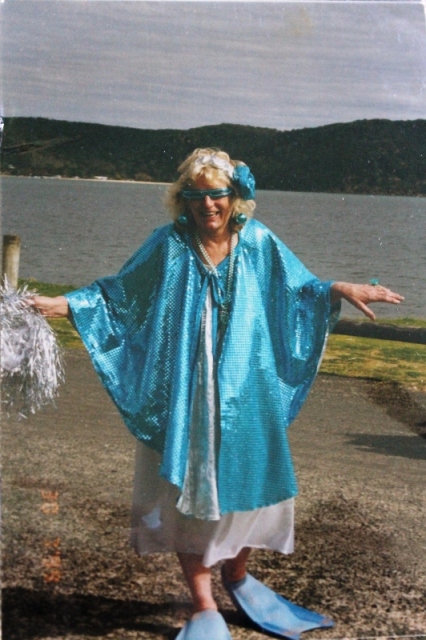
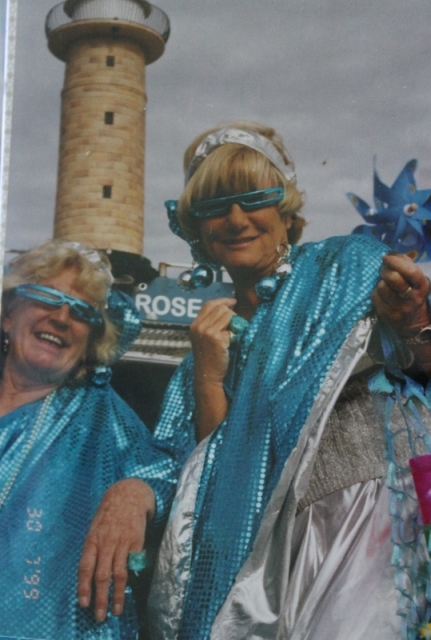
This is our first outfits – (above) – Look at the flippers, we had flippers because we were mermaids! (laughs).
We had a lighthouse on top of it – it folded down – we used to press a button on the dash and it would light up, it was wonderful, we’d come into town with it going.
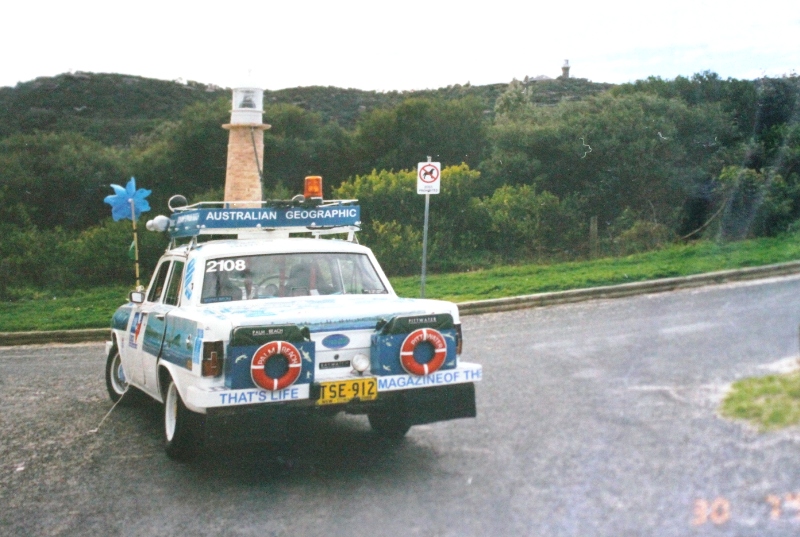
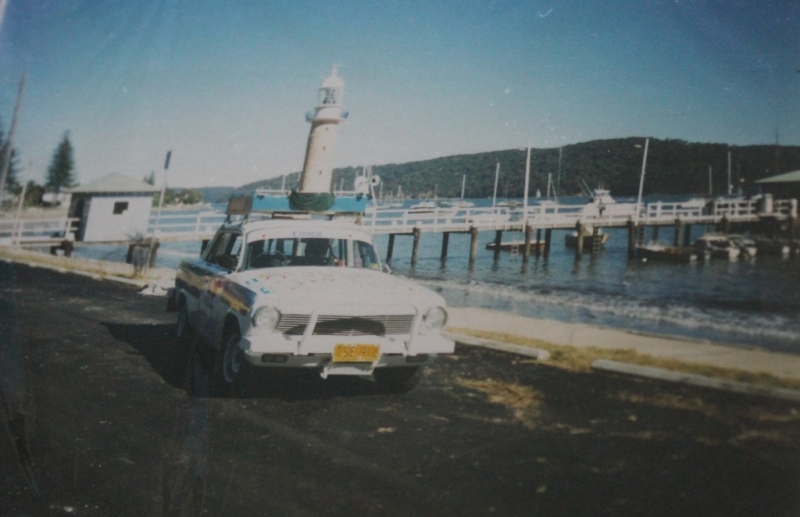
The fellow who was photographing of that Bash, Paul, wanted to take photos of us before the Bash started because we were the first all women crew. He came out before the morning of the Bash at 5.30 in the morning, this was August, and we got dressed like this – he wanted us to go to Palm Beach and stand on the edge of the water with our flippers – he wanted us running down the beach. I ran down the beach and fell flat on my face into the water – I was absolutely freezing, it was the funniest thing.
We went to Broome that first one – everyone kept saying; ‘why are you doing such a big one?’ , I said if I can do this one I can do any.
We had a wonderful trip – the car never broke down.
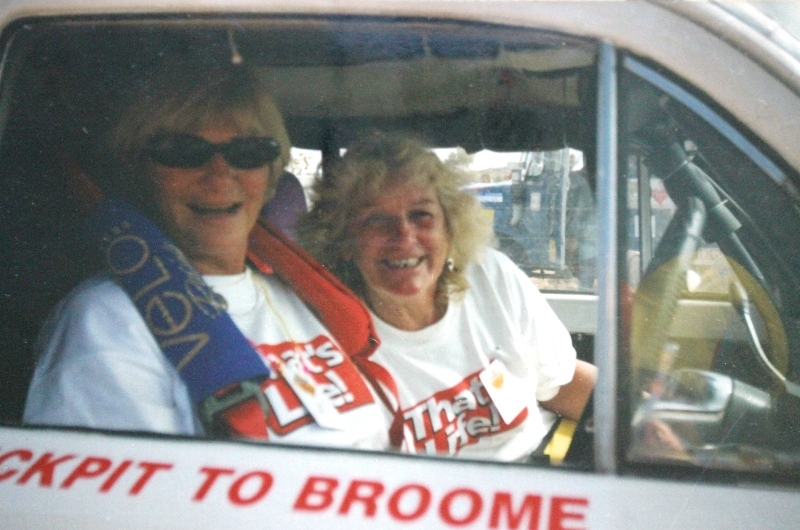
Beryl and Kit - the Brickpit to Broome Bash - 1999.
Which was the second car?
This car rusted out but the motor and gearbox and all its innards were still perfect. We were doing a Bash 8 years ago and coming through a little town called Huondon (QLD) and this guy Gordon Douglas, who was a great Basher, a great man, always got in early. We were always late. We were just coming in the driveway of the motel we were staying at when he was going off to dinner. He said ‘Oh Beryl, are you still driving that old heap?’ – I said ‘yes Gordon, because this will be my last Bash.’
He said ‘why?’, I said ‘this thing is rusted out and my son said he can’t weld it up anymore – he’s welding over welds over welds – he just can’t do it anymore and I can’t afford another car.’ – I’ve always covered the cost of the registration and insurances etc. – it’s always been my car and my son being a motor mechanic of course helps.
Gordon said ‘you’ve got to do the Bash, you’ve just got to – I’ll go and see Michael when I get back and we’ll see what we can work out.’
I said ‘oh ok’ not think anymore about it. When we got down to dinner Gordon came running up and said ‘come with me.’ Dragged me off the seat, walked outside and here’s this blue EH station wagon. He hands me the keys and says ‘this is yours.’
I said ‘what are you talking about?’ – he said ‘ I just got it for you.’
By this time there was three motor mechanics with their heads in it, a couple of guys underneath it – Gordon said ‘I’ve just bought it for you’ – I said ‘I told you I’ve got no money, I can not replace the car.’ He said ‘no, you don’t owe me any money, it’s a present. You’ve got to keep doing the Bash – you’ve just got to. You are an inspiration to us all; we couldn’t do the Bash if you’re no with us. You get it through to Townsville in the morning and I’ll pay to put it on a train and send it to Michael and then I’m out of it.’
I was stunned, absolutely stunned. I said, ‘look we only saw you an hour ago, how come you found a car?’ he said ‘I left you, was walking down the main street and there was a fawny coloured EH station wagon with a couple in it pulled up beside the gutter. I walked up and asked them if they’d sell this car. The guy said, no, not this one – but we have another one at home in the garage that we’ll sell.’ So they drove me back, I had a look at it, gave them the money and now it’s yours.’
So I drove it through to Townsville and took it to the Naval Station there, where he told me to leave it, and they put it on a truck and shipped it back to Sydney.
We then had to rebuild it – Michael said this car has been had by young people and they’ve really knocked it around. We took everything out of this car – we spent a whole weekend, there was four guys and Viktorija and I working all weekend until three o’clock in the morning and back at six am and totally wrecked this first one – at the end a big truck came along and that was the end of my car.
So this one that I drive now is really that car too as it has the motor, the gearbox – everything.
Car 2108 - Mark II
What is the best thing about doing the Bashes to you – you have done a few now?
This will be my 16th here – I did one in New Zealand so it will be my 17th Bash. The best thing is that you feel you’re doing an awful lot for children; you do see it, you see where the money goes, we do get a list of every child that has been helped through Variety and what was done for them. So you know you’re raising money for a good cause.
We also go to schools – we go to two a day. To see the children in those outback schools is just amazing. It’s just wonderful because they’ve never seen anything like this; we get out and throw lollies and presents;
There’s little aboriginal children everywhere and they’re so gorgeous. There’s also those in country towns – one little boy, he’d been in a wheelchair since he was born and was 12 when we met him, but all he had was his grandfather’s old wheelchair. Variety took a wheelchair and presented it to him at his school – can you imagine the tears? There was four hundred of us sobbing, just crying. That’s what happens.
Those visits happen throughout the Bash, there’s children being helped all along the way as well; Variety finds out who needs help in the towns along our route and line it all up.
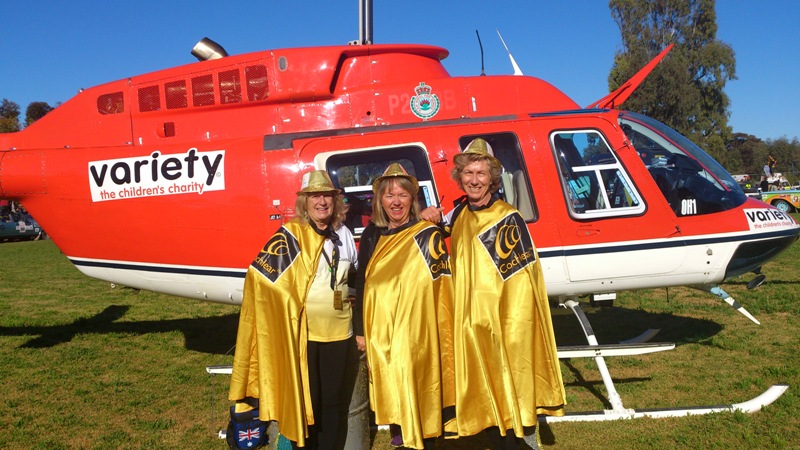
We present swings as well; if a person is in a wheelchair all their life they could never get on a normal swing, their spine prevents it. A number of years ago at one of the meetings a chap came along and he designed a wheelchair swing, these cost 40 thousand dollars to erect, there’s one down in Warringah Mall. What happens is that you turn the child or person around, they go in backwards to the swing, you clip them on with chains and then two people have to swing it standing on either side – the looks on the faces of those people’s faces!
We presented one in the park at Bourke a couple of years ago. There was a young man there aged 32 who had never walked, he’d always been in a wheelchair – and once again everyone was crying – he was placed in the swing and a couple of the boys swung him and his face just lit up, it was just amazing.
By the time you finish each Bash you must be physically and emotionally exhausted?
Yes. We go to disabled schools too that too has high emotional toll.
Last week you were on the road to Bathurst – what were you doing there?
I have two girlfriends up in Cowra, Coby Maclaine and Belinda Green, who used to be Miss Australia. They are both passionate about Australian Wildlife, and many kangaroos that have been hit and left on the side of the road and still have a joey in their pouch and nobody has checked to see if there is a baby still alive there – they go out and check these kangaroos, bring the babies in and rear them, it’s amazing what they do.
There’s a wonderful man called Howard Ralph who has built a hospital down in Braidwood to look after the wildlife. They go from Cowra down to Braidwood a lot with the animals and are very good friends with Howard. Dr Ralph has built some cabins down there but has been unable to furnish them, he’s running out of money to do his work because he does everything for free; Coby said he has a box there for donations but everyone just walks out saying ‘thank you very much’ and goes, so there’s no money coming in, just animals that need help. So they’ve been waning to raise money for him and started off doing a few raffles and things like that. Then they decided that they’d have a stall at the markets in the showground at Cowra. I seem to be the one supplying the stuff; six months ago we did a big market day and I took five carloads of stuff, and my car holds a lot of stuff. The first time I went all the way to Cowra but it was too much – I thought, if you meet me in Bathurst, that’s halfway; I’ll collect the stuff, people give me a lot of stuff, a lot of it for the aboriginals, because I go to Brewarrina as you know, but a lot of the stuff isn’t the right thing for the aboriginals and also a lot of it was new; new paintings, new crockery, stuff that people don’t want anymore and discard and luckily give to me to give to them, they sell it, and the money goes to Dr. Ralph.
How did you get involved with Brewarrina?
Through Jack Cannon, who is a Basher, and was head of Variety, and a great friend. He started the Bush to Beach Program at South Narrabeen Surf Club. I got involved with the Surf Club and the Program and met Joyce and Les. Joyce is the one who, with Les, have really really helped the children of Brewarrina. It was a really rough town a few years ago, was rated the worst town a few years back and now has cleaned up, it’s a great town now, things are much better, particularly when Jack started this Bush to Beach program.
The kids never went to school and Joyce, who gives her life to these children, went to school and said to the children; I have to pick 50 children every time we go to Sydney and I’m only picking children who have come to school everyday. They got 100% attendance after that and it’s never slackened off. As there are only 1500 people in Brewarrina every child gets a chance to come to Sydney, they give them the most wonderful time.
So Jack had a week where there was 12 of us from the surf Club; He hired a bus and the 12 of us went up to Brewarrina and met with all the kids and all the people and Joyce and Les. I fell in love with Joyce and Les, they’re just beautiful people, and they loved me. I asked what could I do for you, what can I do for the community. Joyce said that they had just bought a little old house in town to turn into a refuge for mothers and children, as this was badly needed, and they had no furniture, they had no crockery, they had nothing. Joyce said, children come to me with not a stitch of clothing; mothers come to this little house and they have nothing and they’re trying to start again; we can find them accommodation but we’ve got nothing to give them. So I started doing that and have been going for years now. I can’t tell you how much stuff I’ve taken up there, truckloads of it.
If you’ve landed in Mona Vale in 1935, and you’re still in Palm Beach in 2014 Beryl, what are the most dramatic changes you’ve seen in Pittwater during those decades?
The most dramatic change would be – my daughter is 53 and I have a photograph of her at about 7 months old crawling on the beach at Clareville and there are 8 boats – you couldn’t see anything else in Pittwater – that has been dramatic, the number of boats now in Pittwater. We used to go to Clareville, and when I was a child we used to go to Mona Vale or around to Bayview, as dad knew Mr Halverson and would take us out on a Halverson boat, and it was probably the only boat on Pittwater. Pittwater just seemed to be a vast expanse of water that nobody really used very much. We were only young and we wouldn’t have thought of getting a boat, there wasn’t many of them around, and things were different I guess. We used to take the kids to Clareville because it was a safe beach and there just wasn’t too many people around.
%20boys%20and%20Stace%20at%20Clareville%20cica%201962.jpg?timestamp=1402461352097)
Stacey and her brothers at Clareville - circa 1962.
But of course, I may not have noticed too many changes as I’ve been all that time and grown with them, I was working and doing things and it all grows up around you.
When we first built our house on Bilgola Plateau – we were the second house up there then, and Plateau road was the third road – it was dirt roads, we were in Bilberry Avenue- there was nothing up there. Avalon of course was only tiny.
What is your favourite place in Pittwater and why?
Currawong would have to be my first favourite – because I’ve spent 50 years going to Currawong with my children, the people who ran it were great friends. Then I had the most wonderful years with my grandchildren and Carl and Caressa there as well. That’s where I gave Caressa her 21st birthday just recently, over there. Currawong I think is just beautiful.
I love all of Pittwater but Currawong has to be the top place – and why I fought so hard for it as well too.
What is your motto for life or a favourite phrase you try to live by?
Well I always say to my friends when they ask me how I keep going’; lots of laughs, lots of love and lots of champagne and just keep going.
%20family%20061.jpg?timestamp=1402466639171)
%20family%20079.jpg?timestamp=1402466660508)
Beryl in some of her earlier costumes!
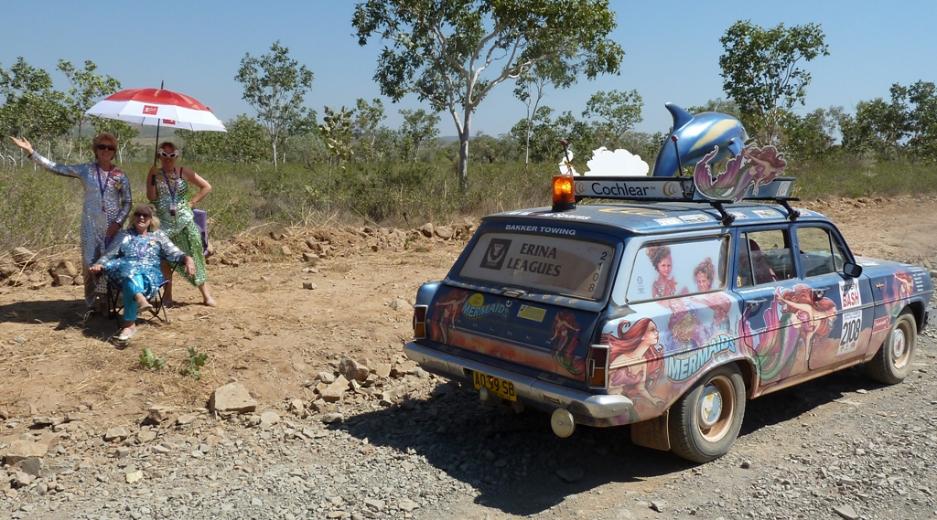
Above and below: the Mermaids of Palm Beach, Car 2108 - 2013!
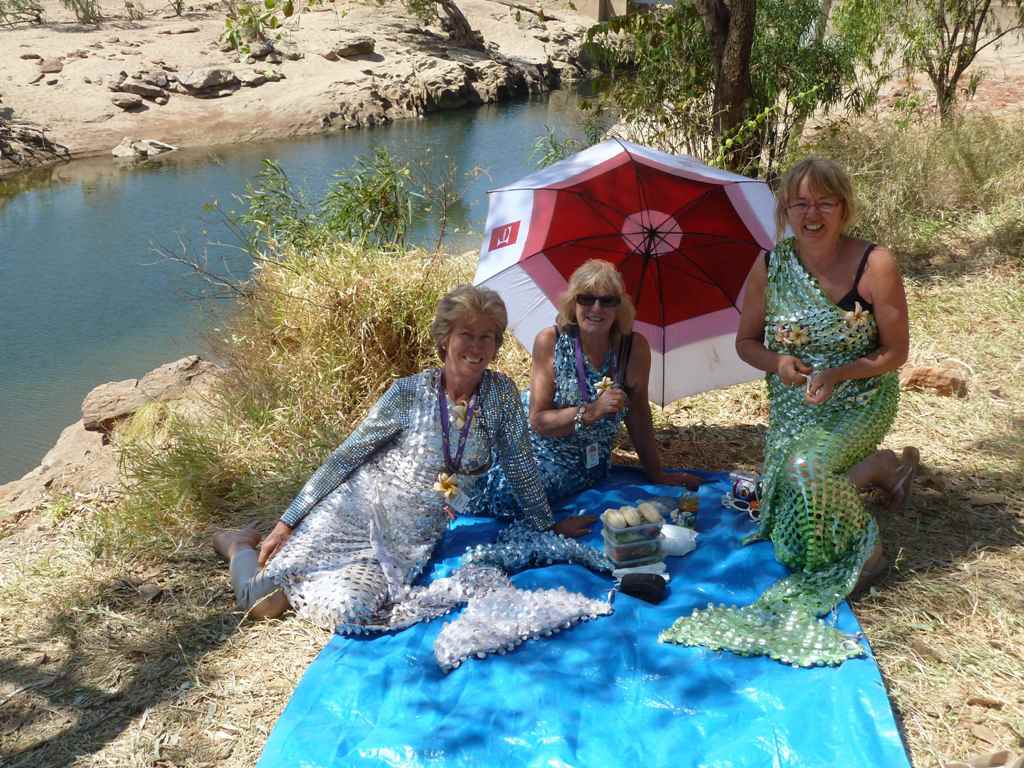
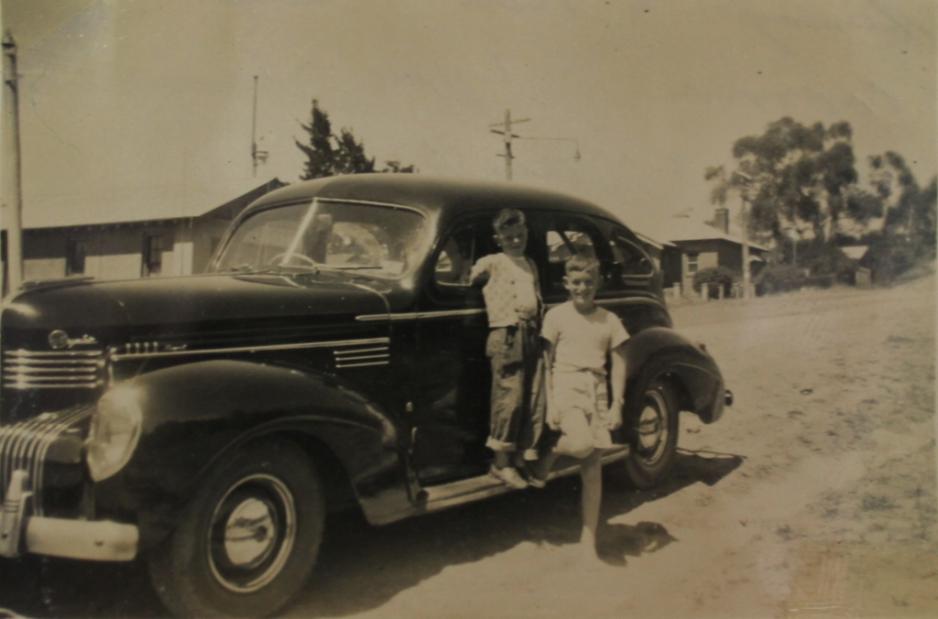
Above: Beryl's first car - a 1939 Chrysler 'Royal', with sons Bruce and Michael, Warriewood in the background, circa 1960-1961.
CHRYSLER ROYAL. THE 1939 MODEL. Optional Dual Transmission.
THE 1939 six-cylinder Chrysler Royal, one of the luxury cars of the Chrysler range, was announced this week by the West Australian distributors, Wentworth Motors, Ltd. Dual power transmission, which is an improved type of overdrive, is available at extra cost on the new model. The wheelbase of the Chrysler Royal is 119in., and with such a big chassis it is natural that special attention should be paid to the construction of the frame. It is a very rigid double drop X-girder truss frame with full length box section side members Gin. deep. There is independent suspension of the coil springs and wishbone type in front, and roll is prevented by a stabilising bar across the front of the chassis. Orthodox semi-eliptic springs are fitted at the rear, and they are sheathed with metal covers to protect the leaves from dirt and moisture. The action of the springs is dampened by direct double acting hydraulic shock absorbers of aeroplane design. Engine Develops 100 b.h.p. The power plant is a six-cylinder head engine with a bore of 3 3-8in. and a stroke of 41in., the piston displacement being 242 cubic inches. The engine is rated at 27.34 h.p. and with a standard cast iron cylinder head and a compression ratio of 6.5 to one it develops 100b.h.p. at 3,600 r.p }. Full length waterjackets and directional cooling ensure an even and economical operating temperature at all speeds. Water is circulated by centrifugal pump and a thermostatic by-pass control is fitted. The fuel system consists of a 15-gallon rear tank feeding to a plain tube down draught carburetter. The carburetter is fitted with idling control and adjustable accelerator pump, and an automatic choke. There is an automatic manifold heat control and an oil bath air cleaner. The ignition system incorporates a vacuum controlled distributor, and other electrical features are a solenoid shift starter and an air cooled generator with voltage control. A feature of the transmission is the ventilated clutch, air being circulated in and out through screened openings to disperse heat. The clutch is of the single plate dry disk type. The dual power operates in conjunction with a new type of overdrive which comes into action at comparatively low speeds (22 to 25 m.p.h.).It is simple and compact in construction. Because of the low speed at which the engine works while the overdrive is in operation, it is an important economy feature. Although it operates at low speeds, the overdrive does not prevent the short bursts of acceleration so necessary in traffic: The closing of an electrical circuit as the accelerator pedal is suddenly depressed throws the overdrive out of gear temporarily and gives the driver the full power of direct drive. The engine power is transmitted by Hotchkiss drive, the rear springs taking up the drive torque and thrust. The rear axle is semi-floating with hypold drive gears and adjustable tapered roller bearings give perfectly silent operation. *The foot brakes are of the hydraulic four-wheels external expanding and self-equalising principle. The 11in. centrifuse drums sa ea d against water and dirt. The styling of the new model is impressive, the dominant feature being a wide chromium bar grille which sweeps up and back from below the front bumper and merges into the lines of the car on either side of the bonnet. The lines sweep over the V-shaped windscreen to the "beavertail" back, which houses an exceptionally large luggage compartment. The seats are wide, deep and finely upholstered and the floors, which are free from obstruction, are thickly carpeted. Ventilation has reached a stage which approaches air conditioning and the doors are fitted with non-slam rotary locks. The steering wheel, controls and all interior fittings are finished in tones to blend with colour scheme of the upholstery. By placing the gear shift lever on the steering column beneath the wheel and the handbrake beneath the dash the front floor is left unobstructed. One of the most attractive features of the instrument panel is the dashboard, which is designed with direct vision instruments located directly infront of the driver's seat. A radio compartment is built into the panel and finished in chromium as part of the design. CHRYSLER ROYAL. (1939, April 6). The West Australian(Perth, WA : 1879 - 1954), p. 11. Retrieved from http://nla.gov.au/nla.news-article46380626
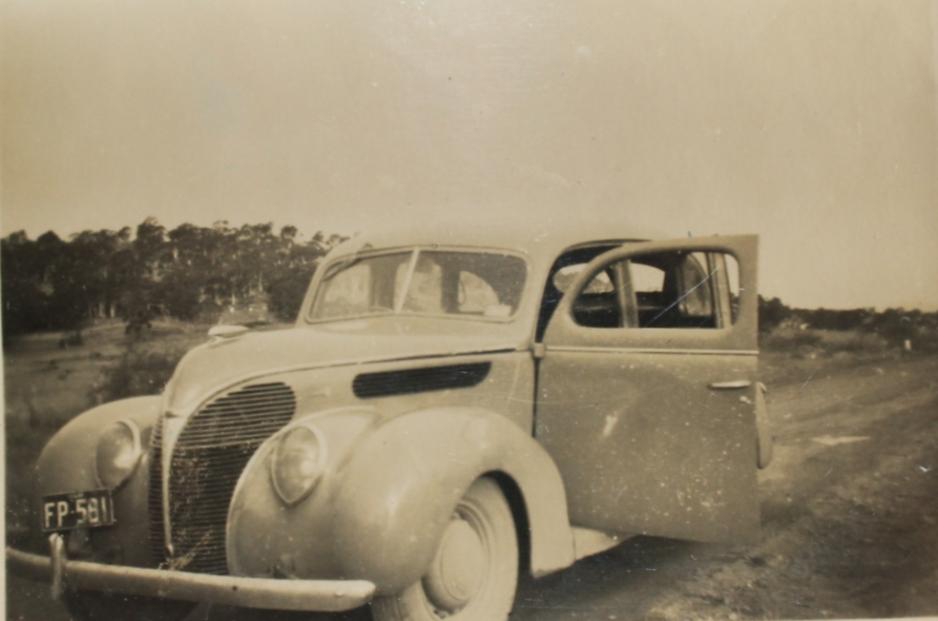
Above: one of Beryl's dads cars
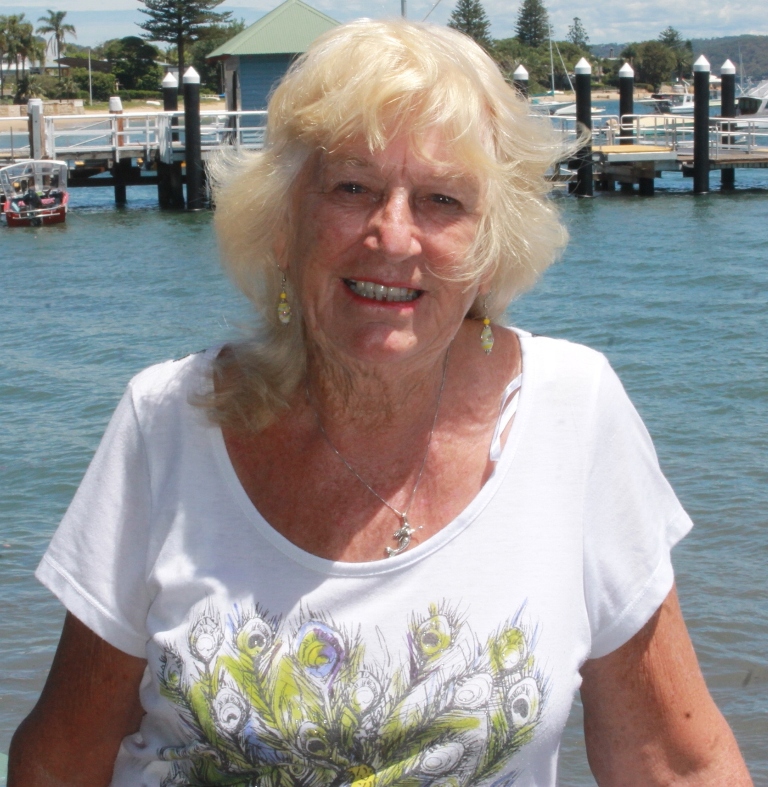
Beryl Jean Driver - 2015